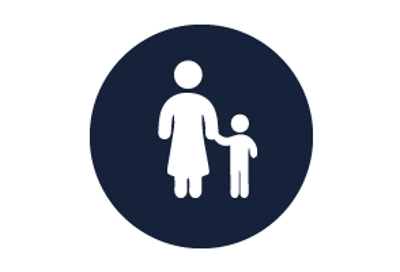Vision Zero for the greater good Vision Zero for the greater good
Auckland Transport (AT) is adopting the Safe System approach which targets all elements of road safety for all road users.
Vision Zero, an ethics-based transport safety approach, was developed in Sweden in the late 1990s. It places responsibility on the people who design and operate the transport system to provide a safe system. This is a transport system that is built for human beings, that acknowledges that people make mistakes and human bodies are vulnerable to high-impact forces in the event of a crash. To protect people from forces that can cause traumatic injury we need to look at how the whole system works together to protect all those who use our roads.
Road Safety Business Improvement Review 2021
No death or serious injury is acceptable
A New Zealand where no one is killed or seriously injured in road crashes
Road to zero consultation document 2019
Reduce deaths and serious injuries by 60% on AT roads by 2027
ATAP 2018
A safe land transport system, free from death and serious injury
GPS 18/19-27/28
A safe transport network, free from death and serious injury
Auckland plan 2050
Programme status: Implementation
Programme zone: Region-wide
Programme overview
Vision Zero for Tāmaki-Makaurau Auckland is an ambitious new transport safety vision that states that there will be no deaths or serious injuries on our transport system by 2050.
The Safe System approach acknowledges that as people we all make mistakes; a mistake should not mean someone dies or is seriously injured on our roads. It’s also an approach that values everyone using the road, not just those in vehicles. It is about caring for more vulnerable road users like people walking or cycling, children and the elderly. Vision Zero is the international benchmark for transport safety.
- Vision Zero for Tāmaki Makaurau Transport Safety Strategy and Action Plan to 2030 (PDF 1.8MB, 29 pages).
- Vision Zero so far 2020 (PDF 9.4MB, 28 pages).
- Auckland at a glance (PDF 2MB, 8 pages).
- Vision Zero at a glance (PDF 1.8MB).

Ethics
People shouldn't die or be seriously injured in transport journeys.

Responsibility
System designers are ultimately responsible for the safety level in the entire system - systems, design, maintenance and use. Everyone needs to show respect, good judgement and follow rules. If injury still occurs because of lack of knowledge, acceptance or ability, then system designers must take further action to prevent people being killed or seriously injured.

People Centered
System designers must accept that people make mistakes and people are vulnerable.

System response
We need to look at the whole system and develop combinations of solutions and all work together to ensure sage outcomes.
We want a transport system that prioritises safety, not a system that puts other measures ahead of human life. We will get you there safely, as efficiently as we can. This is a paradigm shift from thinking we will get you there quickly, as safely as we can. It is also a shift away from the conventional “costs versus benefit” used to decide how much money to spend on our road network, towards valuing the benefit of decreasing risk to our community using our transport network every day.
System designers like AT are ultimately responsible for the safety level in the entire system - systems, design, maintenance and use. Everyone needs to show respect, good judgement and follow the rules. If injury still occurs because of lack of knowledge, acceptance ability, then system designers must take further action to prevent people being killed or seriously injured.
Auckland’s Vision Zero programme is overseen by the Tāmaki-Makaurau Road Safety Governance Group, a partnership between various agencies Auckland Transport (AT), NZ Transport Agency (NZTA), NZ Police, Auckland Regional Public Health Service (ARPHS), Accident Compensation Corporation (ACC), Auckland Council (AC) and the Ministry of Transport (MoT).

The Safe System
The Safe System approach says while we all have a responsibility to make good choices, we’re human and we make mistakes.

Te Tiriti o Waitangi (The Treaty of Waitangi) and Vision Zero
The Tāmaki-Makaurau Road Safety Governance Group recognises our obligations under Te Tiriti o Waitangi.

Safety research supporting Vision Zero
We’ve conducted research and surveyed Aucklanders to better understand their views on road safety. View our latest findings here.

Safe speeds programme
Auckland Transport is working hard to bring down an unacceptably high rate of death and serious injuries on our roads to zero.

Road safety
Improving road safety will help reduce the number of people killed or injured on our roads.


